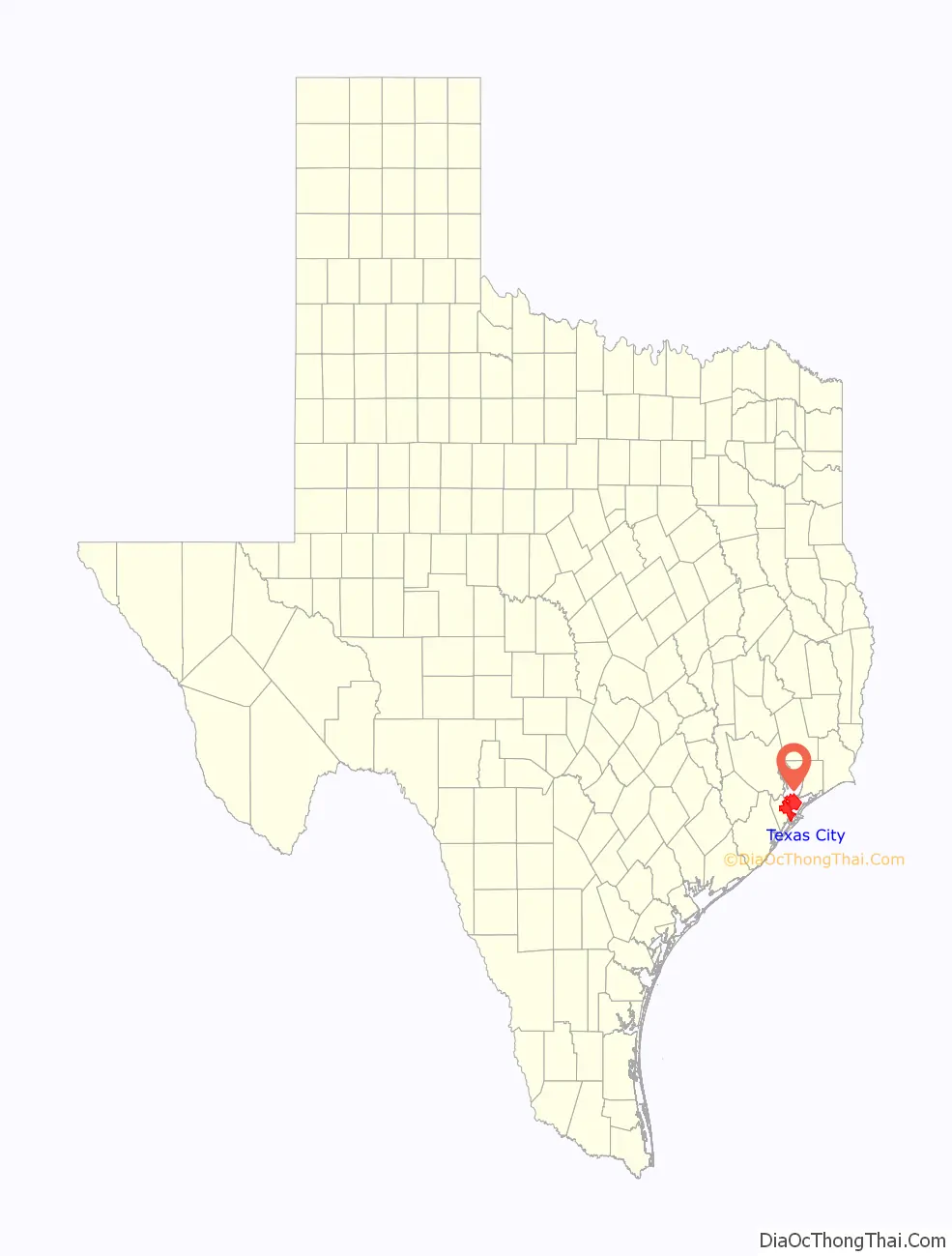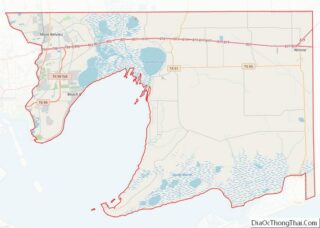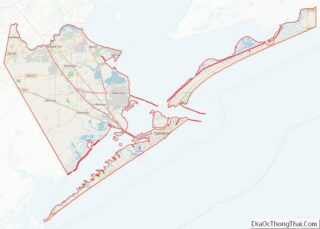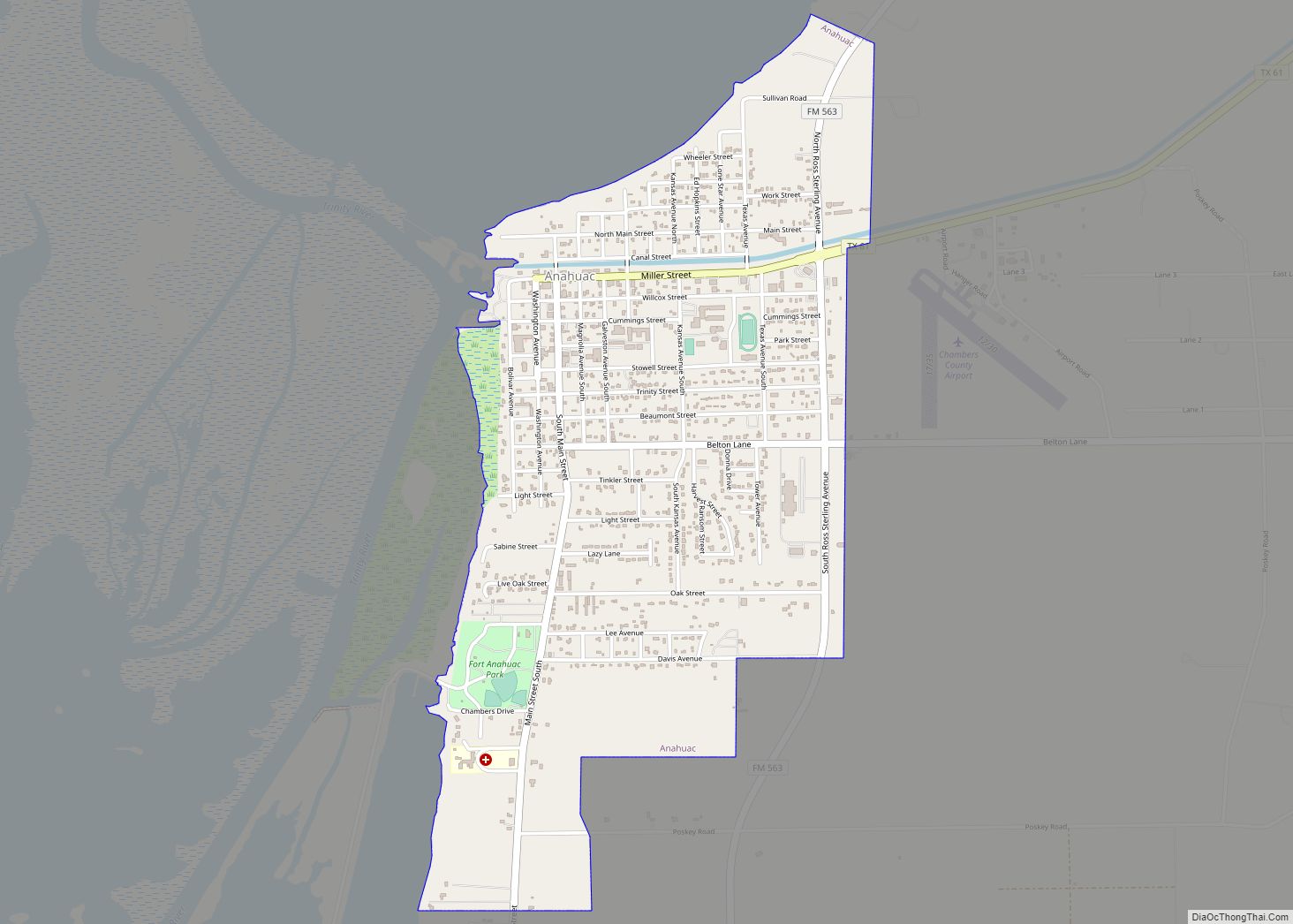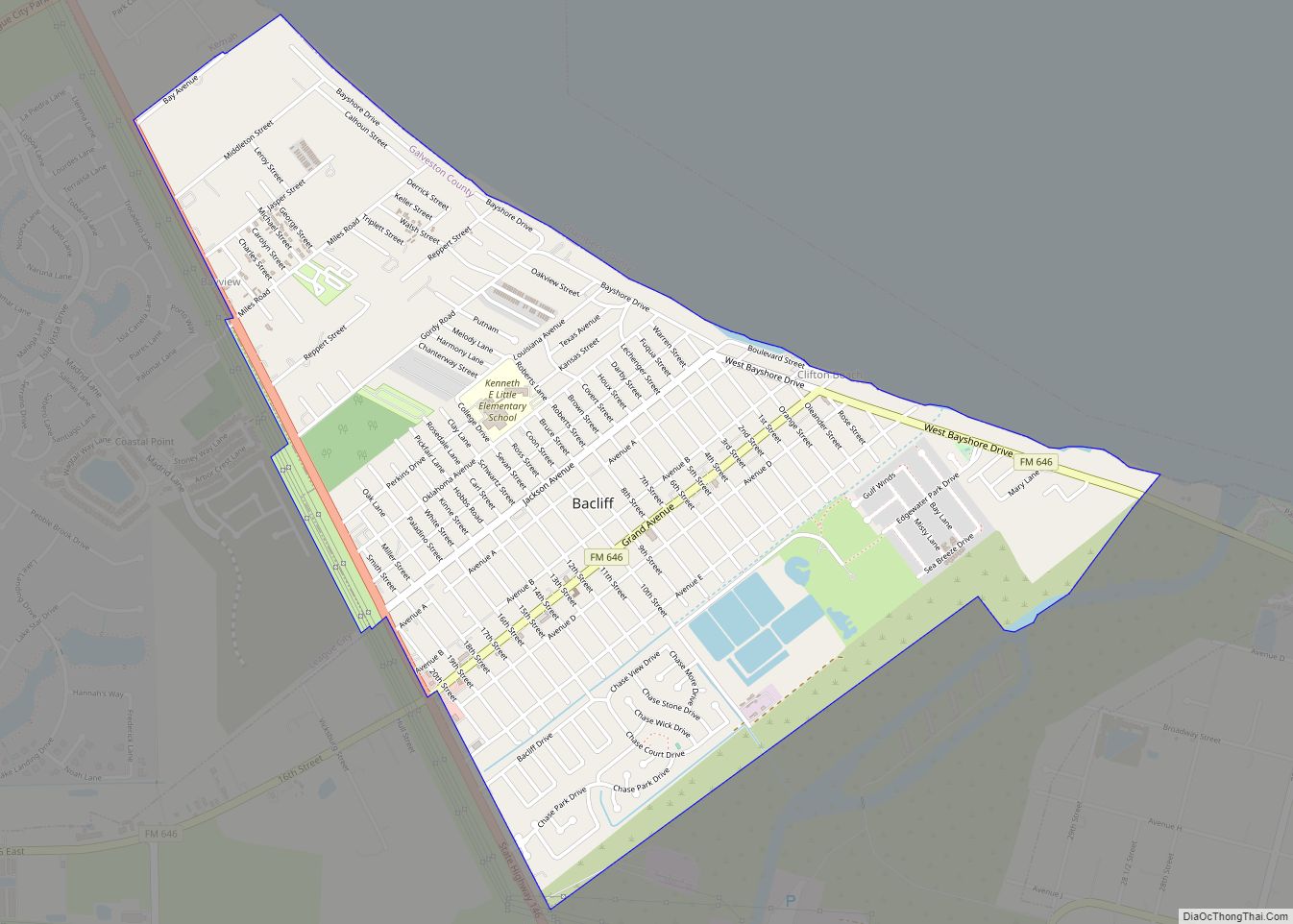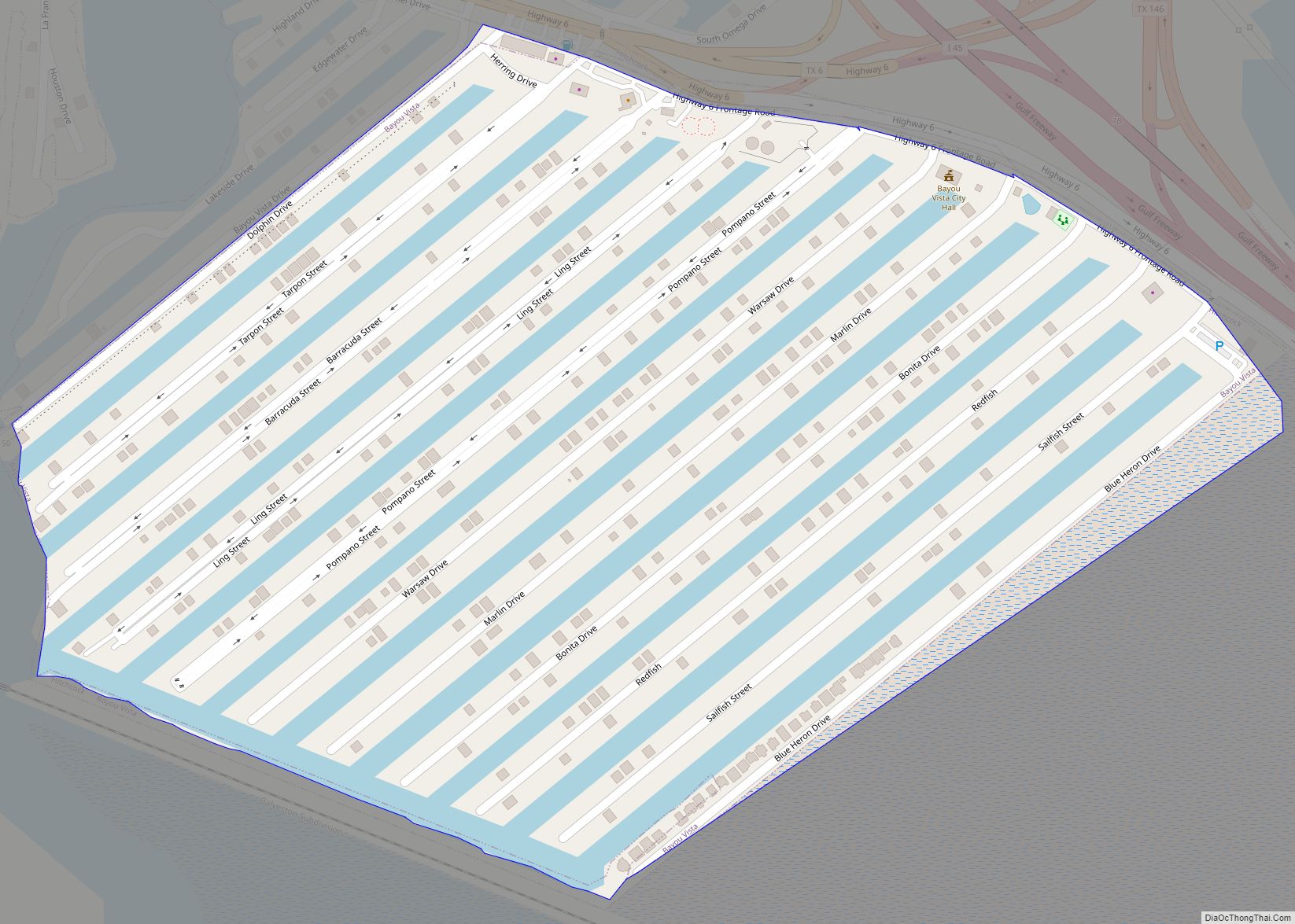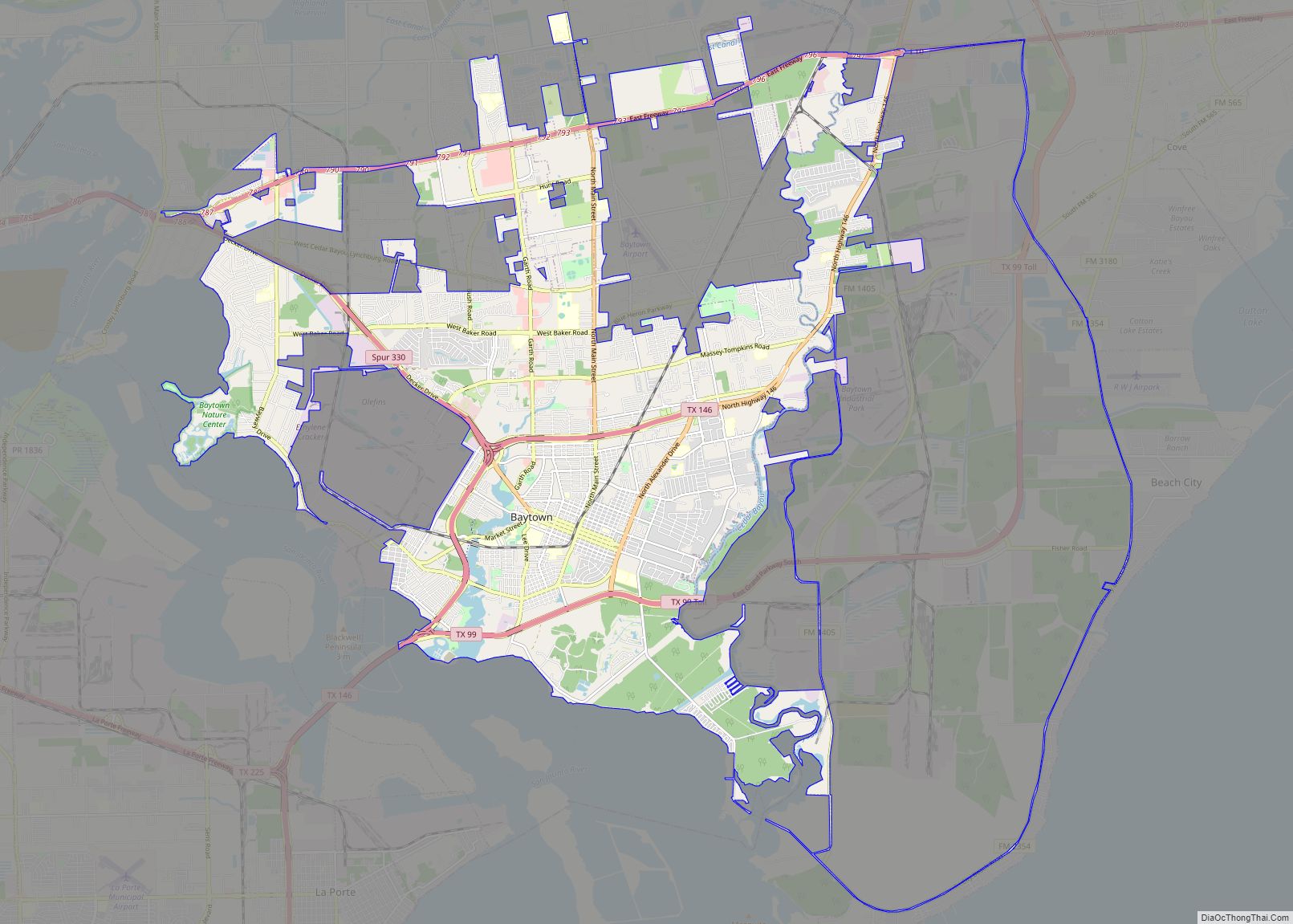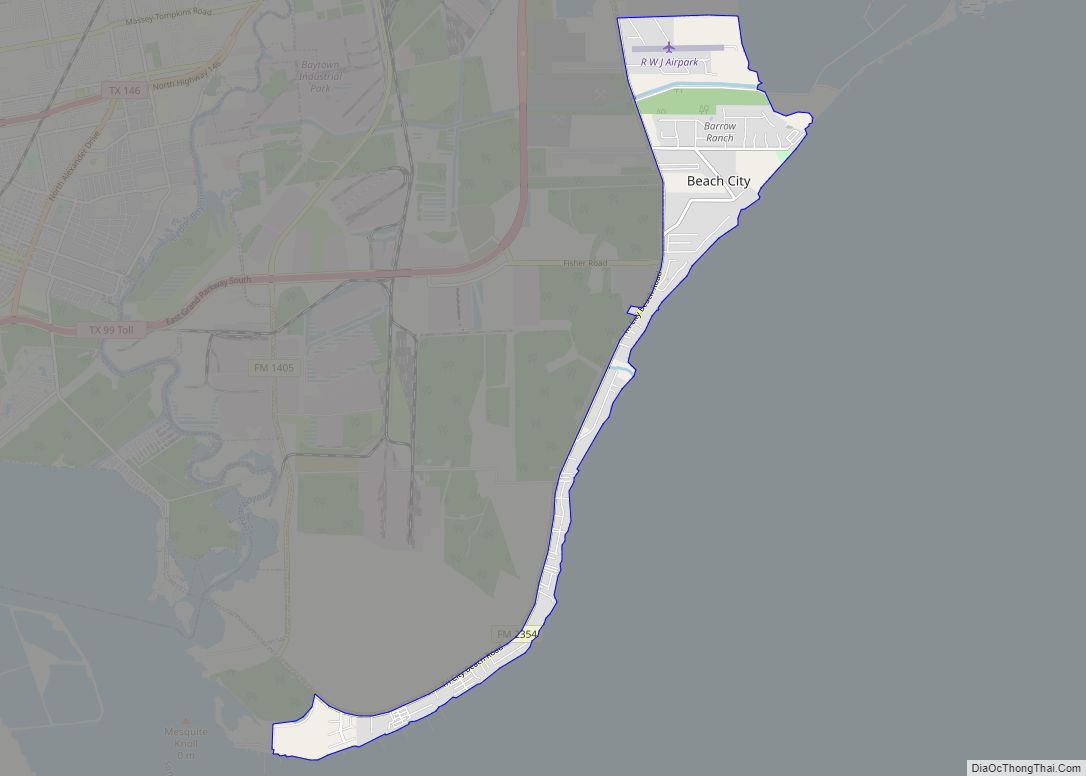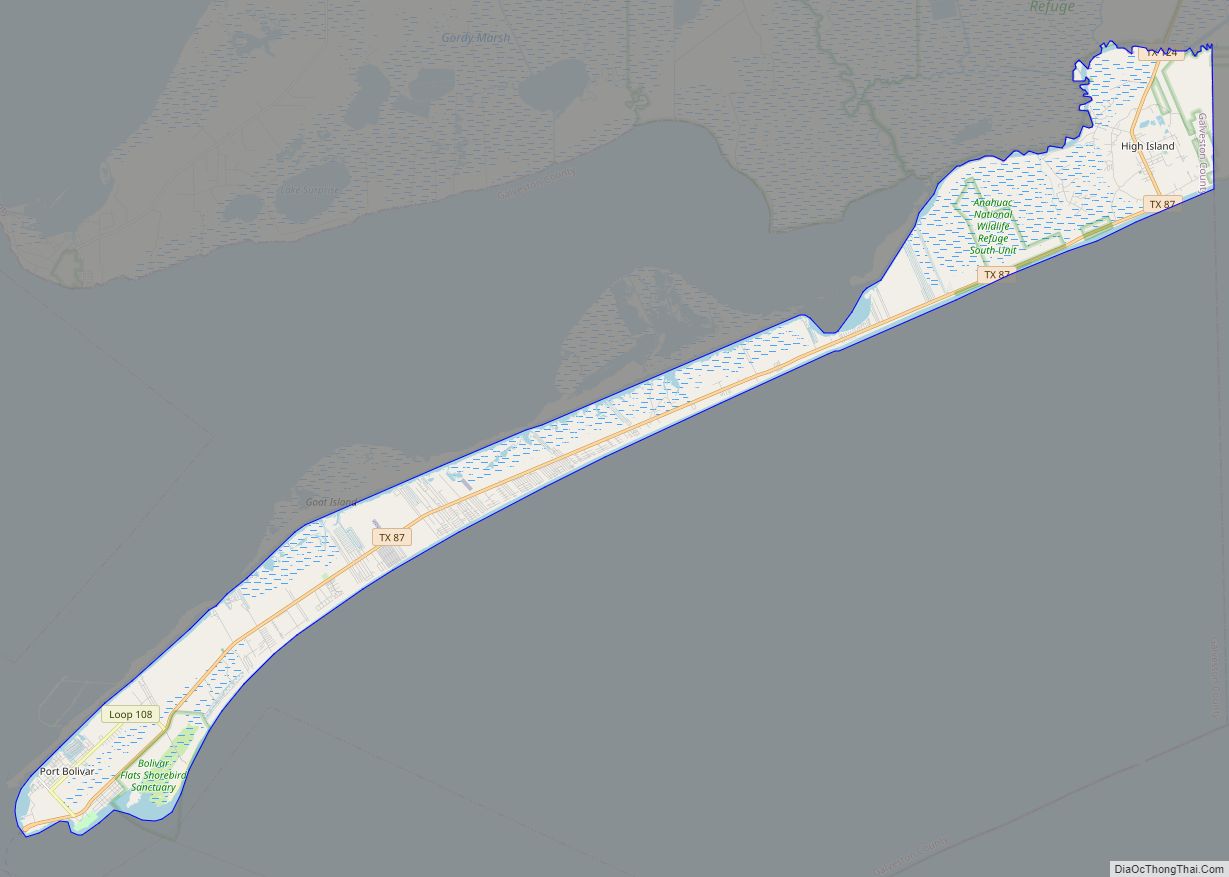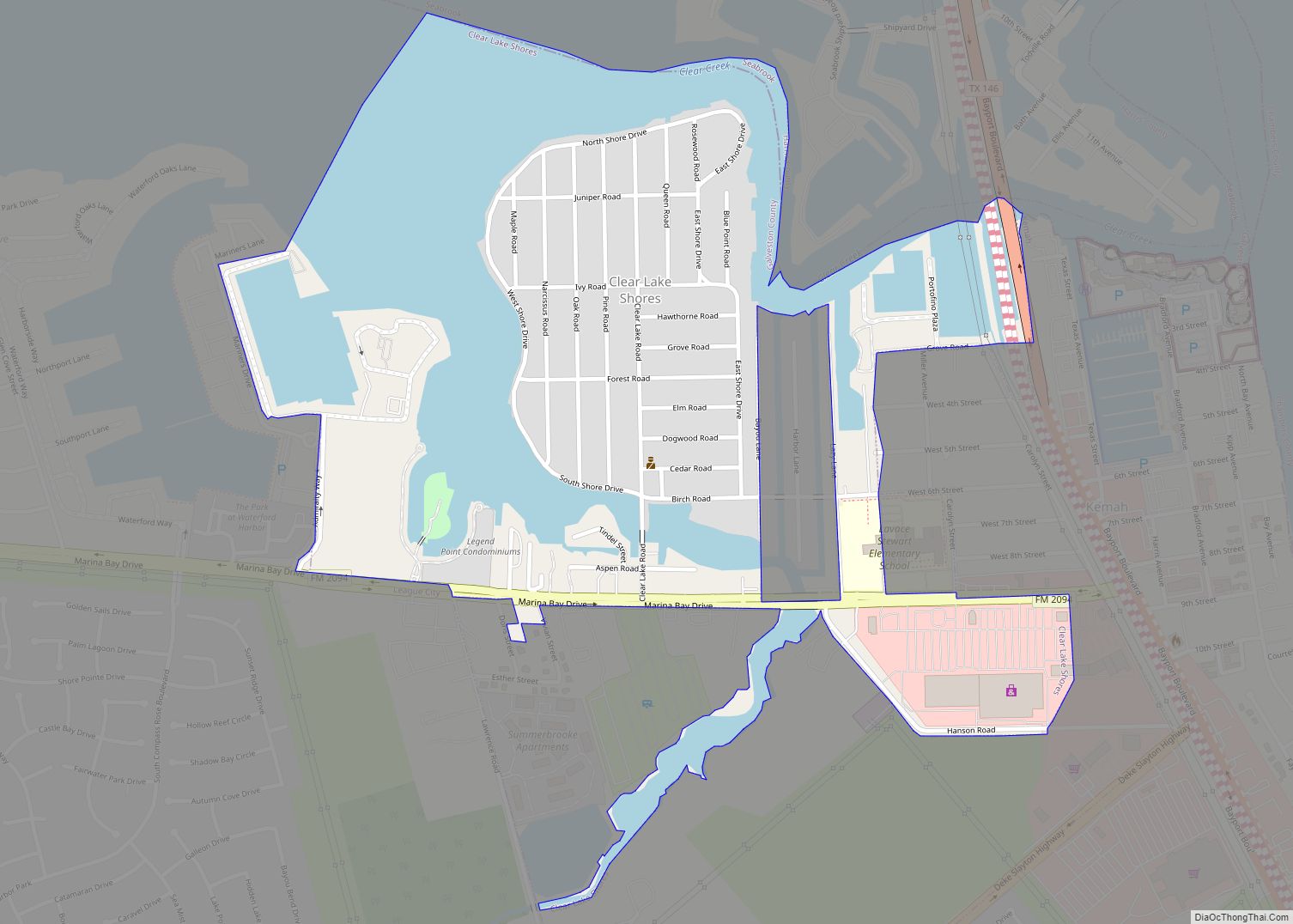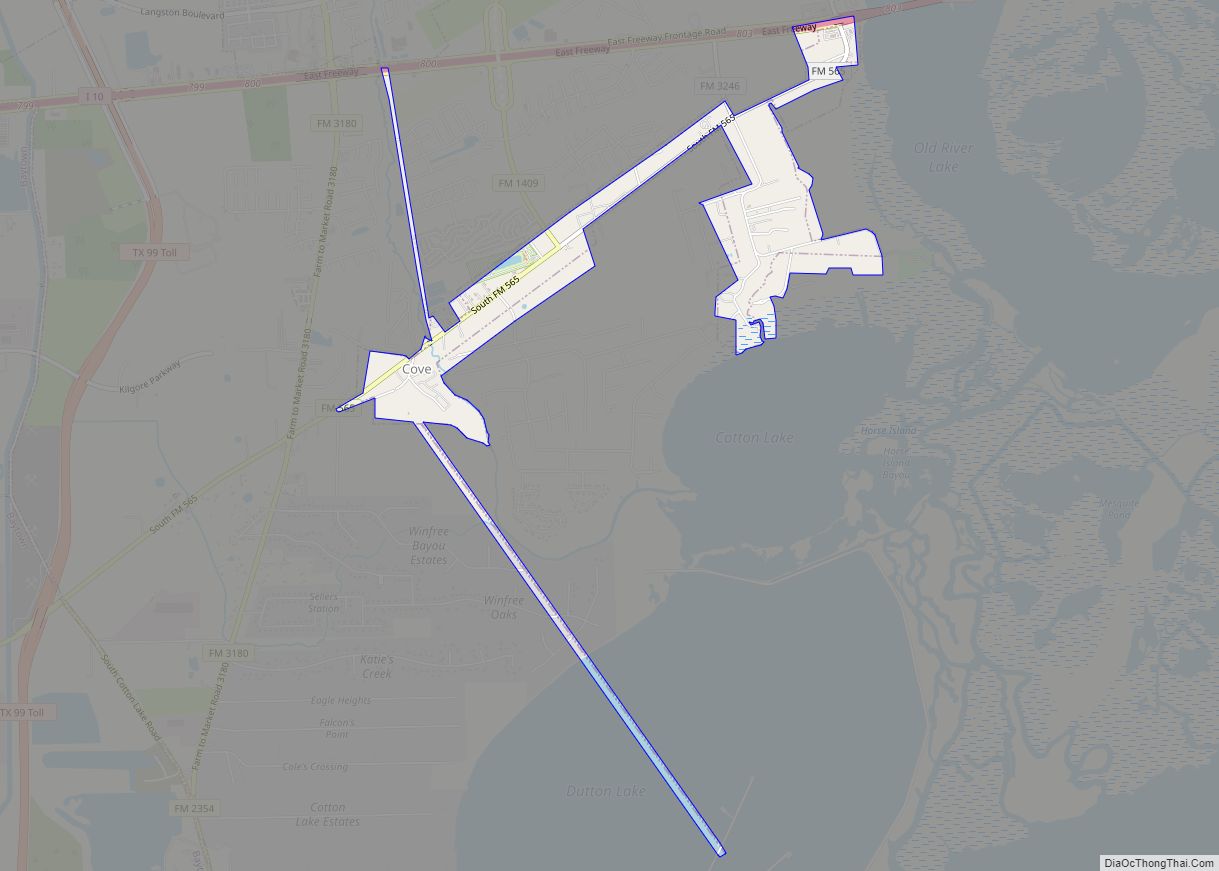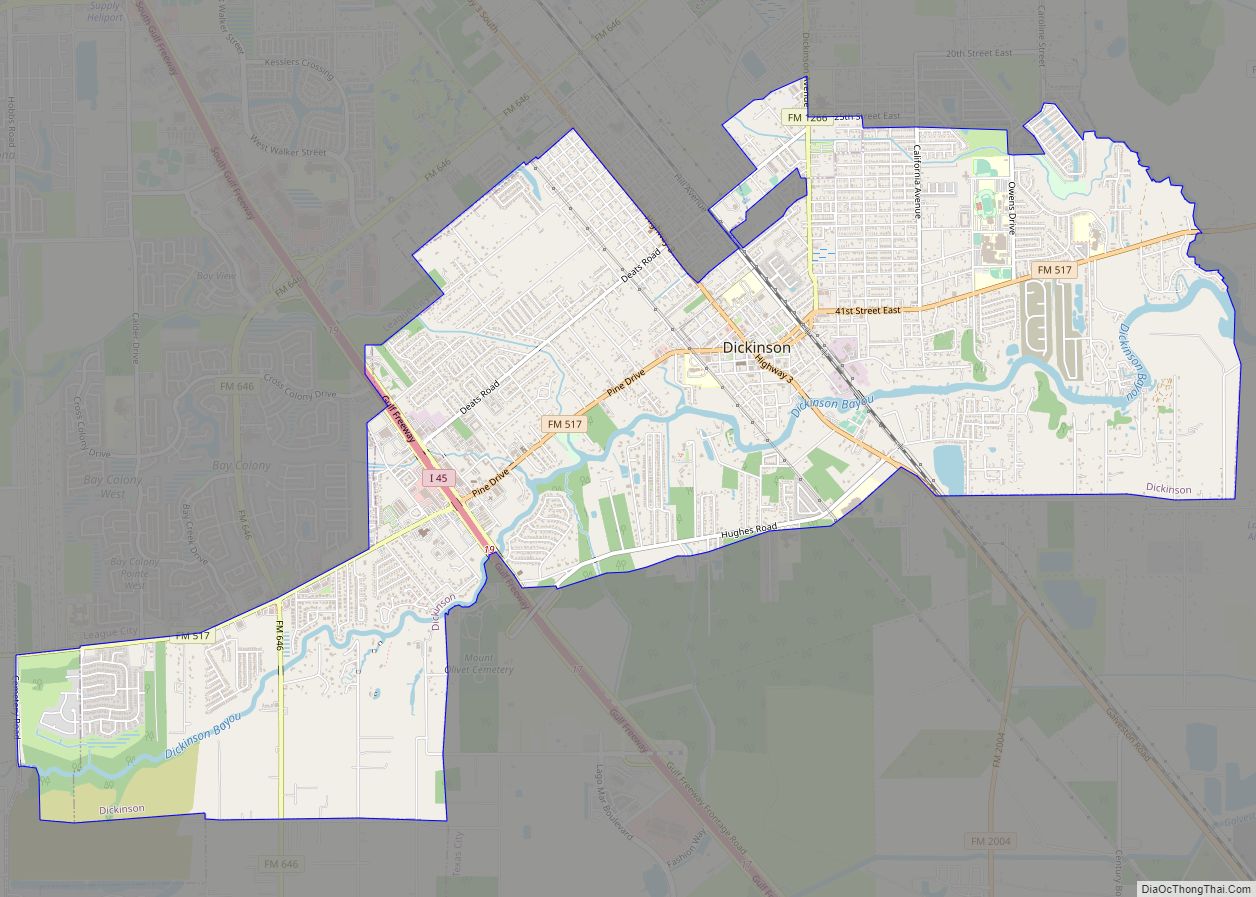Texas City is a city in Galveston County in the U.S. state of Texas. Located on the southwest shoreline of Galveston Bay, Texas City is a busy deepwater port on Texas’s Gulf Coast, as well as a petroleum-refining and petrochemical-manufacturing center. The population was 51,898 at the 2020 census, making it the third-largest city in Galveston County, behind League City and Galveston. It is a part of the Houston metropolitan area. The city is notable as the site of a major explosion in 1947 that demolished the port and much of the city.
| Name: | Texas City city |
|---|---|
| LSAD Code: | 25 |
| LSAD Description: | city (suffix) |
| State: | Texas |
| County: | Chambers County, Galveston County |
| Elevation: | 10 ft (3 m) |
| Total Area: | 185.68 sq mi (480.92 km²) |
| Land Area: | 66.28 sq mi (171.65 km²) |
| Water Area: | 119.41 sq mi (309.26 km²) |
| Total Population: | 51,898 |
| Population Density: | 783/sq mi (302.3/km²) |
| ZIP code: | 77590-77592 |
| Area code: | 409 |
| FIPS code: | 4872392 |
| GNISfeature ID: | 1376420 |
| Website: | Texas-City-TX.org |
Online Interactive Map
Click on ![]() to view map in "full screen" mode.
to view map in "full screen" mode.
Texas City location map. Where is Texas City city?
History
Three duck hunters in 1891 noted that a location along Galveston Bay, known locally as Shoal Point, had the potential to become a major port. Shoal Point had existed since the 1830s, when veterans of the Texas Revolution (1835–1836) were awarded land for their services. The name was applied to the community when a post office opened in 1878. The duck hunters were three brothers from Duluth, Minnesota, named Benjamin, Henry, and Jacob Myers. After they returned to Duluth, they formed the Myers Brothers syndicate, convinced other investors to put up money to buy 10,000 acres (4,000 hectares) of Galveston Bay frontage, including Shoal Point. They renamed the area Texas City.
Founding
By 1893, the investors had formed the Texas City Improvement Company (TCIC), which plotted and filed the townsite plan. A post office opened in 1893 with Frank B. Davison appointed as the town’s first postmaster, to serve about 250 people who had moved there from Minnesota and Michigan. TCIC also received permission from the federal government to dredge an eight-foot channel in the bay from Bolivar Roads (at the east end of Galveston Island) to serve Texas City. In 1894, the channel was first used commercially. TCIC eventually dredged the channel to a 40-foot depth and extended the length of the port to 1.5 mi. TCIC also built a 4-mi railroad to the Texas City Junction south of town, where it connected to two other rail lines: Galveston, Houston and San Antonio and Galveston-Houston and Henderson. Despite these successes, the TCIC went bankrupt in 1897. Its assets were reorganized into two new companies: Texas City Company (TCC), and Texas City Railway Terminal Company (TCRTC). TCC acquired 3,000 city lots and provided water, gas, and electricity to the town. TCRTC operated the railroad. These companies were chartered on February 4, 1899.
A grid of streets and avenues was laid out during the 1890s, and houses and other structures began to appear. The Davison Home, where the first childbirth in the town took place, was constructed between 1895 and 1897. As the TCIC, the TCC, and TCRTC expanded, urbanization expanded.
Permission was granted in the summer of 1900 to dredge the Texas City channel to a depth of 25 ft. The disastrous Galveston Hurricane of 1900 interrupted the project, washing the dredge ashore. However, the Texas City port remained open after the storm passed. Even before the channel dredging was complete, the first ocean-going ship, SS Piqua, arrived at the port from Mexico on September 28, 1904. Dredging was completed March 19, 1905, when the US government opened a customs house in Texas City. Port growth progressed rapidly after this, from 12 ships in 1904, to 239 in 1910.
Texas City Refining Company was chartered in 1908 to build a refinery adjacent to the port facility. For several years, it was the only Texas refinery capable of producing the byproducts wax and lubricating oil. This facility was later acquired and expanded by Texas oilman Sid Richardson. Three more refineries soon followed, making Texas City a major port for deepwater shipping of Texas petroleum products to the Atlantic Coast.
Texas City incorporated in 1911 with a mayor and commission form of government. It held its first mayoral election on September 16, choosing William P. Tarpey as mayor.
The 2nd Division of the United States Army deployed to Texas City in 1913 to guard the Gulf Coast from incursions during the Mexican Revolution, essentially encamping nearly half of the nation’s land military personnel there, due to the perceived double threat that the Mexican Revolution might spill over across the border or that the neighboring country might become a German ally in the incipient World War.
The military deployment also included the 1st Aero Division, and the Wright brothers trained over a dozen soldiers as military pilots, essentially turning Texas City into the birthplace of what became the United States Air Force, as the city claims at its monument of the birthplace of the Air Force at Bay Street City Park. Speed and distance records were set by pilots trained and planes flying out of Texas City’s impromptu military air base.
An August 1915 hurricane completely demolished the encampment. Nine soldiers were killed. Military leaders promptly moved the camp to San Antonio.
In 1921, the Texas City Railway Terminal Company took over operations of the port facilities. Hugh B. Moore was named president of the company and began an ambitious program of expansions. He was credited with attracting a sugar refinery, a fig processing plant, a gasoline cracking plant, and a grain elevator. Also, more warehouses and tank farms were built to support this growth. By 1925, Texas City had an estimated population of 3,500 and was a thriving community with two refineries producing gasoline, the Texas City Sugar Refinery, two cotton compressing facilities, and even passenger bus service.
The Great Depression and competition caused the sugar refinery to fail in 1930. Economic hard times afflicted the city for a few years until the oil business returned to expansion. Republic Oil Refinery opened a gasoline refinery in 1931. In 1934, Pan American Refinery (a subsidiary of Standard Oil Company of Indiana) began operating. Moore was able to win this refinery from the Houston Ship Channel because of Texas City’s location nearer the Gulf of Mexico. By the end of the 1930s, Texas City’s population had grown to 5,200.
Seatrain Lines constructed a terminal at the Texas City port during 1939–1940. This was a specialized company that owned ships designed to carry railroad cars from Texas City to New York City on a weekly schedule. By 1940, Texas City was the fourth-ranked Texas port, exceeded only by Houston, Beaumont, and Port Arthur.
Texas City Dike
Texas City is home to the Texas City Dike, a man-made breakwater built of tumbled granite blocks in the 1930s, that was originally designed to protect the lower Houston Ship Channel from silting. The dike, famous among locals as being “the world’s longest man-made fishing pier”, extends roughly 5.2 mi (8 km) to the southeast into the mouth of Galveston Bay.
World War II impact
Prosperity and industrial expansion returned as the United States became more involved in World War II. Enemy submarines had almost completely stopped the shipment of petroleum products to friendly countries from the Middle East, South America, and Southeast Asia. Texas City refineries and chemical plants worked around the clock at full capacity to supply the war effort. Realizing that all of the world’s tin smelters could no longer supply the US demand, Jesse H. Jones, head of the Defense Plant Corporation, decided to build the Texas City tin smelter. The government also funded construction of a petrochemical plant to make styrene monomer, a vital raw material for synthetic rubber. Monsanto Chemical Company contracted to operate the facility, which became the nucleus of an even larger petrochemical complex after the war. By 1950, the local population had reached 16,620.
1947 Texas City disaster
The postwar prosperity was interrupted on the morning of April 16, 1947, when the French ship Grandcamp, containing ammonium nitrate fertilizer, exploded, initiating what is generally regarded as the worst industrial accident in United States history, the Texas City disaster. The fertilizer manufactured in Nebraska and Iowa was already overheating when stored at the Texas City docks. The blast devastated the Monsanto plant and offices, which were immediately across the slip from the Grandcamp, blew away the warehouses, showered shrapnel from the ship in all directions, and ignited a second ship, the S.S.High Flyer, docked at an adjacent slip. Released from its mooring by the blast, the High Flyer rammed a third ship, SS Wilson B. Keene, docked across the slip. Both ships also carried ammonium nitrate fertilizer and were ablaze. They, too, exploded. In all, the explosions killed 581 and injured over 5,000 people. The explosions were so powerful and intense that many of the bodies of the emergency workers who responded to the initial explosion were never accounted for. The entire Texas City and Port Terminal Fire departments were wiped out.
The steel-reinforced concrete grain elevator was pockmarked with shrapnel and the drive shaft of the Grandcamp was embedded in the headhouse. The ship’s anchor was hurled several miles away, where it was discovered embedded in the ground at the PanAmerican refinery. School children and townspeople who were attracted to the smoke also died, and entire blocks of homes near the port were destroyed. People in Galveston 14 miles (23 km) away were knocked to their knees. Surrounding chemical and oil tanks and refineries were ignited by the blast. At least 63 who died and were not able to be identified are memorialized in a cemetery in the north part of town. The Texas City disaster is widely regarded as the foundation of disaster planning for the United States. Monsanto and other plants committed to rebuilding, and the city ultimately recovered quite well from the accident. Numerous petrochemical refineries are still located in the same port area of Texas City. The city has often referred to itself as “the town that would not die,” a moniker whose accuracy would be tested once again in the days surrounding Hurricane Ike’s assault on the region early on September 13, 2008.
1987 Marathon Oil refinery hydrogen fluoride gas release
On October 30, 1987, a crane at the Marathon Oil refinery accidentally dropped its load on a tank of liquid hydrogen fluoride, causing a release of 36,000 pounds (16,000 kg) of hydrogen fluoride gas and requiring 3,000 residents to be evacuated.
2005 BP explosion
On March 23, 2005, the city suffered another explosion in a local BP (formerly Amoco) oil refinery which killed 15 and injured 180. In the U.S. Chemical Safety and Hazard Investigation Board (CSB)’s final report on the accident, published in March 2007, they described the event as “one of the worst industrial disasters in recent U.S. history.” The BP facility in Texas City is the United States’ third-largest oil refinery, employing over 2,000 people, processing 460,000 barrels (73,000 m³) of crude oil each day, and producing roughly 4% of the country’s gasoline.
2008 Hurricane Ike
Even in the widespread destruction throughout Galveston County caused by the wind and surge associated with Ike, Texas City was largely spared the devastation that other low-lying areas suffered. Texas City is mostly surrounded by a 17-mile-long (27 km) levee system that was built in the early 1960s following the devastating floods from Hurricane Carla in 1961. Together with pump stations containing several Archimedes’ screws located at various places throughout the northeast periphery of the city adjoining Galveston, Dollar Bay, and Moses Lake, the levee and pump station system may well have saved the city from wholesale devastation at the hands of Ike’s powerful tidal surge. Damage in the city was largely limited to that caused by Ike’s powerful winds and heavy rains.
Beginning Sunday, September 14, 2008, the day after landfall, Texas City’s high school football complex, Stingaree Stadium, was used as a staging and relocation area for persons evacuated by National Guard Black Hawk helicopters from nearby bayfront communities such as the Bolivar Peninsula and Galveston Island. Also, by the morning of Monday, September 15, the American Red Cross had opened a relief and material distribution center in the city.
The Texas City Dike was overtopped by a greater than 12-foot (3.7 m) storm surge when Hurricane Ike barreled through the region in the early-morning hours of Saturday, September 13, 2008. Although all buildings, piers, and the Dike Road were destroyed, the dike itself weathered the storm. The dike was closed for three years while the road and supporting facilities were rebuilt. It was reopened to traffic in September 2011.
Texas City Road Map
Texas City city Satellite Map
Geography
Texas City is located at 29°24′00″N 94°56′02″W / 29.399983°N 94.933851°W / 29.399983; -94.933851 (29.399983, −94.933851). This is 10 miles (16 km) northwest of Galveston and 37 miles (60 km) southeast of Houston.
According to the United States Census Bureau, the city has a total area of 185.6 square miles (480.6 km), of which 63.8 square miles (165.2 km) is land and 121.7 square miles (315.3 km), or 65.61%, is covered by water.
Officially, the elevation of Texas City is 10 feet above sea level, though some areas are even lower. It was naturally vulnerable to flooding by hurricane storm surges and heavy rainstorms.
The land south and west of the city is flat coastal plain. A large part of this area to the south is marshland. Texas City is bounded on the north by Moses Lake, which is fed by Moses Bayou, a freshwater stream. The lake drains into Galveston Bay, which bounds the city on the east.
See also
Map of Texas State and its subdivision:- Anderson
- Andrews
- Angelina
- Aransas
- Archer
- Armstrong
- Atascosa
- Austin
- Bailey
- Bandera
- Bastrop
- Baylor
- Bee
- Bell
- Bexar
- Blanco
- Borden
- Bosque
- Bowie
- Brazoria
- Brazos
- Brewster
- Briscoe
- Brooks
- Brown
- Burleson
- Burnet
- Caldwell
- Calhoun
- Callahan
- Cameron
- Camp
- Carson
- Cass
- Castro
- Chambers
- Cherokee
- Childress
- Clay
- Cochran
- Coke
- Coleman
- Collin
- Collingsworth
- Colorado
- Comal
- Comanche
- Concho
- Cooke
- Coryell
- Cottle
- Crane
- Crockett
- Crosby
- Culberson
- Dallam
- Dallas
- Dawson
- Deaf Smith
- Delta
- Denton
- Dewitt
- Dickens
- Dimmit
- Donley
- Duval
- Eastland
- Ector
- Edwards
- El Paso
- Ellis
- Erath
- Falls
- Fannin
- Fayette
- Fisher
- Floyd
- Foard
- Fort Bend
- Franklin
- Freestone
- Frio
- Gaines
- Galveston
- Garza
- Gillespie
- Glasscock
- Goliad
- Gonzales
- Gray
- Grayson
- Gregg
- Grimes
- Guadalupe
- Hale
- Hall
- Hamilton
- Hansford
- Hardeman
- Hardin
- Harris
- Harrison
- Hartley
- Haskell
- Hays
- Hemphill
- Henderson
- Hidalgo
- Hill
- Hockley
- Hood
- Hopkins
- Houston
- Howard
- Hudspeth
- Hunt
- Hutchinson
- Irion
- Jack
- Jackson
- Jasper
- Jeff Davis
- Jefferson
- Jim Hogg
- Jim Wells
- Johnson
- Jones
- Karnes
- Kaufman
- Kendall
- Kenedy
- Kent
- Kerr
- Kimble
- King
- Kinney
- Kleberg
- Knox
- La Salle
- Lamar
- Lamb
- Lampasas
- Lavaca
- Lee
- Leon
- Liberty
- Limestone
- Lipscomb
- Live Oak
- Llano
- Loving
- Lubbock
- Lynn
- Madison
- Marion
- Martin
- Mason
- Matagorda
- Maverick
- McCulloch
- McLennan
- McMullen
- Medina
- Menard
- Midland
- Milam
- Mills
- Mitchell
- Montague
- Montgomery
- Moore
- Morris
- Motley
- Nacogdoches
- Navarro
- Newton
- Nolan
- Nueces
- Ochiltree
- Oldham
- Orange
- Palo Pinto
- Panola
- Parker
- Parmer
- Pecos
- Polk
- Potter
- Presidio
- Rains
- Randall
- Reagan
- Real
- Red River
- Reeves
- Refugio
- Roberts
- Robertson
- Rockwall
- Runnels
- Rusk
- Sabine
- San Augustine
- San Jacinto
- San Patricio
- San Saba
- Schleicher
- Scurry
- Shackelford
- Shelby
- Sherman
- Smith
- Somervell
- Starr
- Stephens
- Sterling
- Stonewall
- Sutton
- Swisher
- Tarrant
- Taylor
- Terrell
- Terry
- Throckmorton
- Titus
- Tom Green
- Travis
- Trinity
- Tyler
- Upshur
- Upton
- Uvalde
- Val Verde
- Van Zandt
- Victoria
- Walker
- Waller
- Ward
- Washington
- Webb
- Wharton
- Wheeler
- Wichita
- Wilbarger
- Willacy
- Williamson
- Wilson
- Winkler
- Wise
- Wood
- Yoakum
- Young
- Zapata
- Zavala
- Alabama
- Alaska
- Arizona
- Arkansas
- California
- Colorado
- Connecticut
- Delaware
- District of Columbia
- Florida
- Georgia
- Hawaii
- Idaho
- Illinois
- Indiana
- Iowa
- Kansas
- Kentucky
- Louisiana
- Maine
- Maryland
- Massachusetts
- Michigan
- Minnesota
- Mississippi
- Missouri
- Montana
- Nebraska
- Nevada
- New Hampshire
- New Jersey
- New Mexico
- New York
- North Carolina
- North Dakota
- Ohio
- Oklahoma
- Oregon
- Pennsylvania
- Rhode Island
- South Carolina
- South Dakota
- Tennessee
- Texas
- Utah
- Vermont
- Virginia
- Washington
- West Virginia
- Wisconsin
- Wyoming

